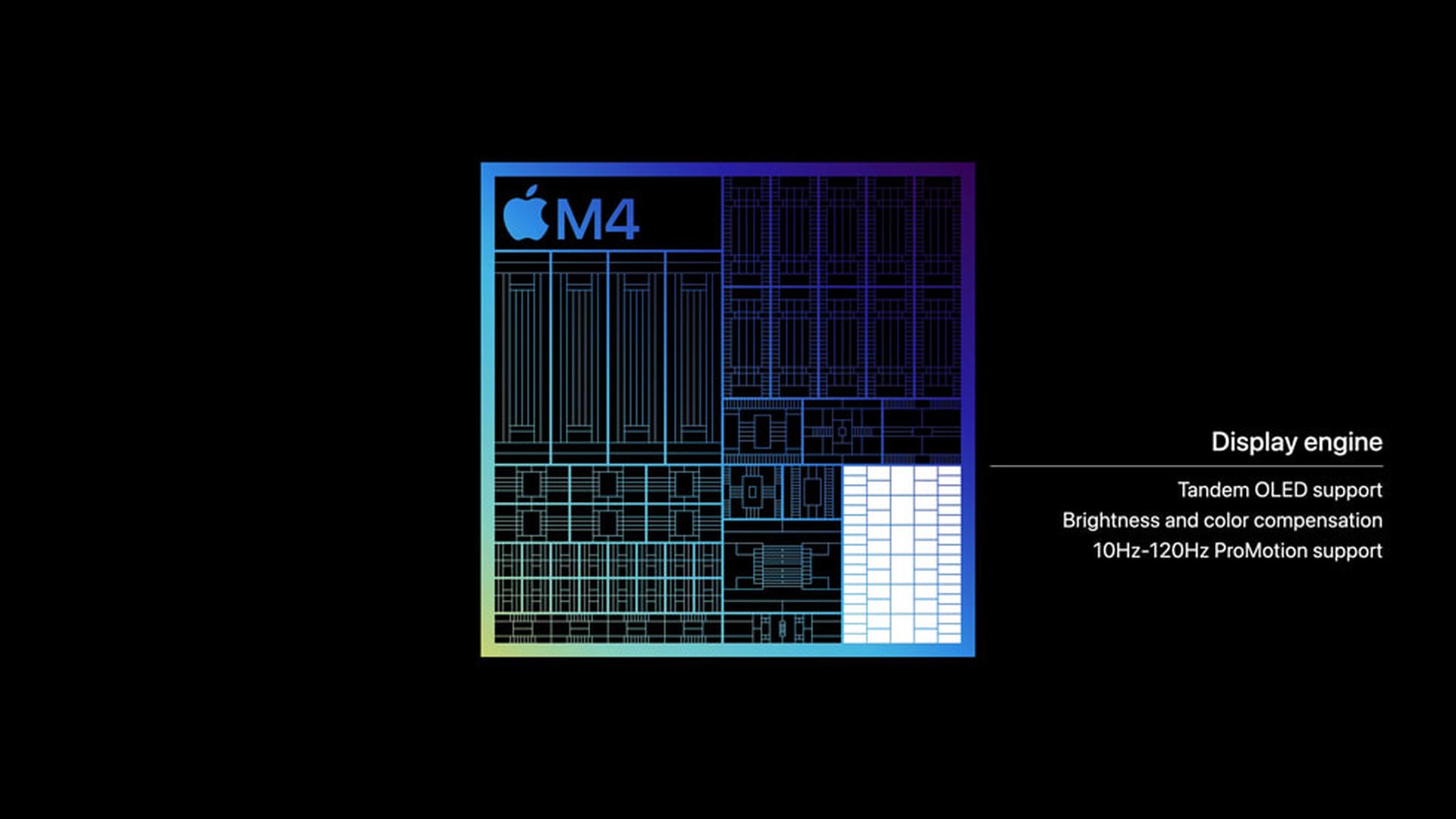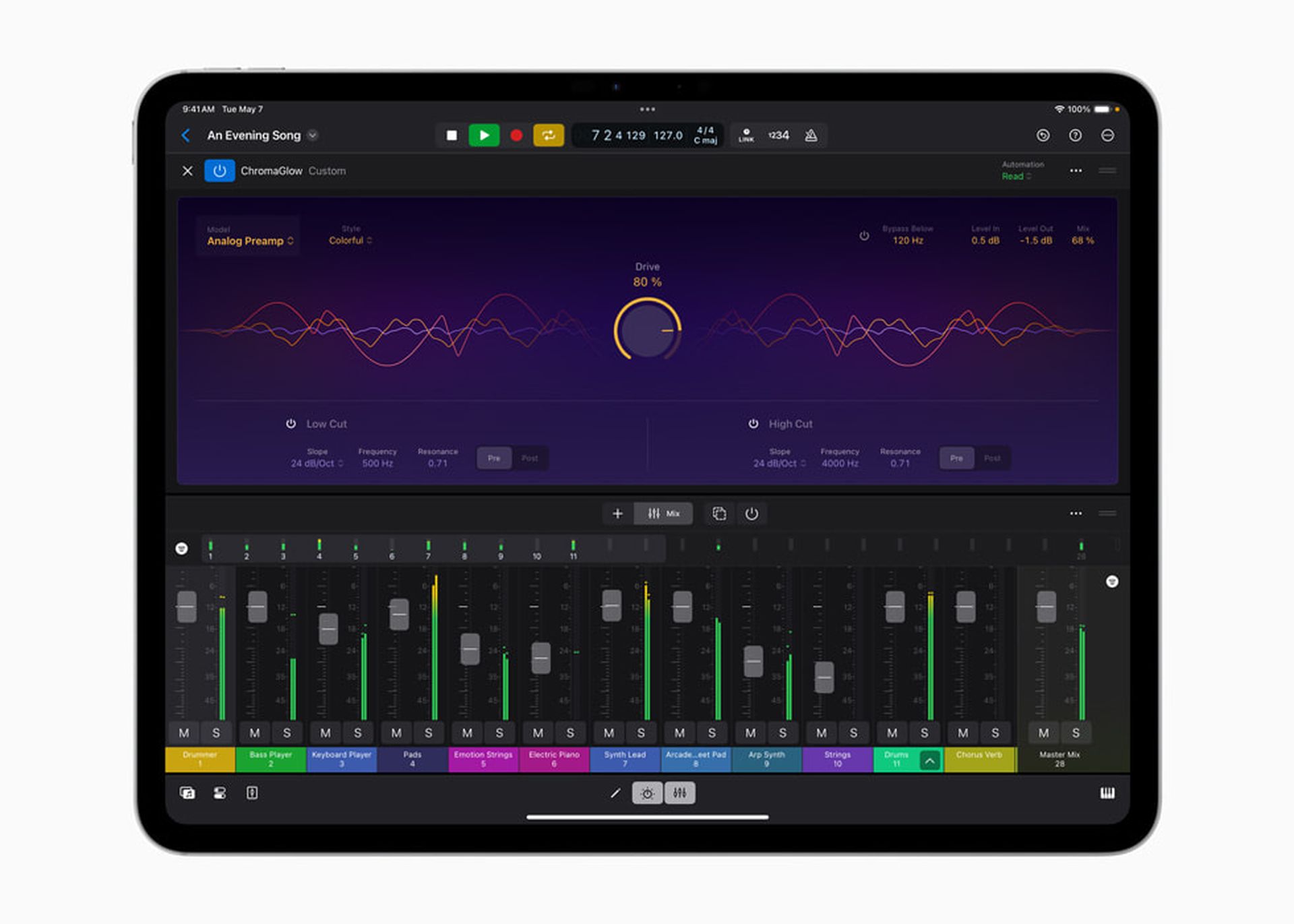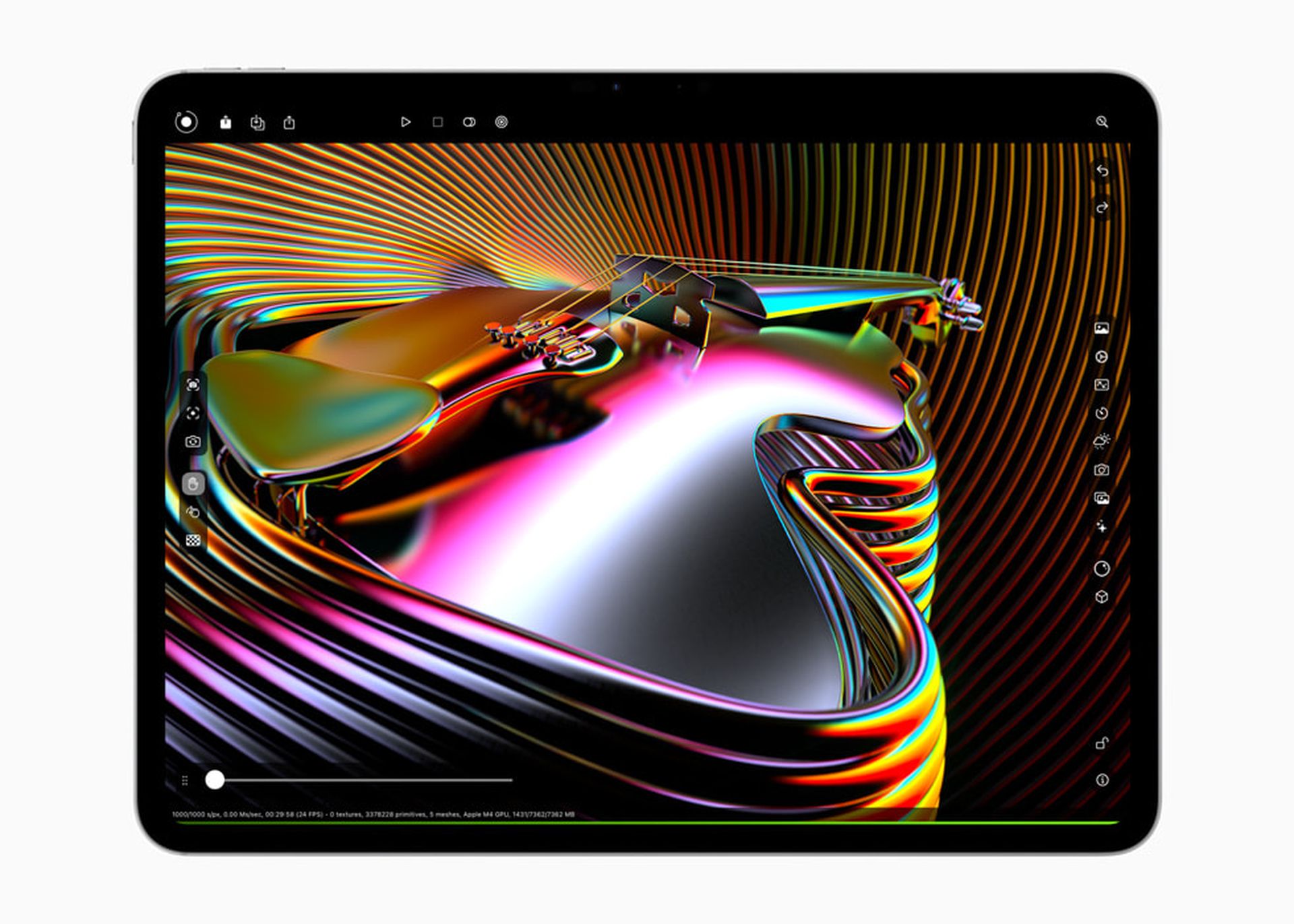Apple unveiled its new M4 chip today, enhancing the performance of the latest iPad Pro.
Apple M4: Everything you need to know
M4, developed with cutting-edge 3-nanometer technology, is a system on a chip (SoC) that significantly improves the energy efficiency of Apple’s hardware. The M4 chip features a new display engine that enhances the sharpness, color, and brightness of the iPad Pro’s Ultra Retina XDR display.
The new chip includes a CPU with up to 10 cores and a 10-core GPU that builds on the technology of the previous M3 chip. It introduces features like Dynamic Caching, hardware-accelerated ray tracing, and mesh shading to the iPad, making it a powerhouse for graphics and performance. The M4 also hosts Apple’s fastest Neural Engine, capable of performing up to 38 trillion operations per second, surpassing any current AI PC.
This advanced technology, combined with increased memory bandwidth and next-generation machine learning accelerators in the CPU and a high-performance GPU, makes the new iPad Pro exceptionally powerful for AI tasks.

“The new iPad Pro with M4 is a great example of how building best-in-class custom silicon enables breakthrough products,” stated Johny Srouji, Apple’s senior vice president of Hardware Technologies. “The power-efficient performance of M4, along with its new display engine, makes the thin design and game-changing display of iPad Pro possible, while fundamental improvements to the CPU, GPU, Neural Engine, and memory system make M4 extremely well suited for the latest applications leveraging AI. Altogether, this new chip makes iPad Pro the most powerful device of its kind.”
The M4 chip contains 28 billion transistors and uses second-generation 3-nanometer technology, further enhancing the efficiency of Apple silicon. It also supports an entirely new display engine, pushing forward the precision, color accuracy, and brightness uniformity of the Ultra Retina XDR display, which uses the light from two OLED panels to achieve its quality.
10-core CPU
Continuing with the advancements, the M4 chip features a robust up-to-10-core CPU, which includes up to four high-performance cores and six efficiency cores. These next-generation cores have enhanced branch prediction and wider decode and execution engines for the performance cores, along with deeper execution mechanisms for the efficiency cores. Additionally, both types of cores are equipped with upgraded, next-generation machine learning accelerators.
The M4 offers up to 1.5 times faster CPU performance compared to the powerful M2 chip previously used in the iPad Pro. This boost significantly enhances the handling of complex tasks, such as orchestrating music files in Logic Pro or processing intensive 4K video effects in LumaFusion, facilitating a smoother experience in professional workflows.
GPU capabilities
In terms of GPU capabilities, the M4’s new 10-core GPU leverages the advanced graphics architecture introduced with the M3 chips. It incorporates Dynamic Caching, an Apple innovation that dynamically allocates local memory in hardware and in real-time. This optimization drastically improves GPU utilization, boosting performance for demanding professional applications and games.
The M4 also introduces hardware-accelerated ray tracing to the iPad for the first time, enhancing the realism of shadows and reflections in games and other graphically rich content. Moreover, the GPU includes hardware-accelerated mesh shading, which enhances geometry processing efficiency and allows for more complex visual scenes in games and graphics-intensive applications.
The performance improvements extend to professional rendering applications like Octane, where the M4 delivers rendering speeds up to four times faster than the M2. These enhancements ensure that the M4 maintains Apple silicon’s leading performance per watt standard. Remarkably, the M4 can achieve the same performance level as the M2 while using only half the power. Compared to the latest PC chips in thin and light laptops, the M4 can deliver equivalent performance using just a quarter of the power.

Neural engine
The M4 chip features a state-of-the-art Neural Engine, an integral part of the chip designed specifically for accelerating AI tasks. This is Apple’s most advanced Neural Engine to date, with the capability to perform a staggering 38 trillion operations per second—making it 60 times faster than the first Neural Engine introduced in the A11 Bionic chip. This enhancement, combined with next-generation machine learning accelerators in the CPU, a high-performance GPU, and high-bandwidth unified memory, makes the M4 an exceptionally powerful chip for AI applications.
The enhanced Neural Engine enables sophisticated AI features in iPadOS such as Live Captions for real-time audio transcriptions, and Visual Look Up, which can identify objects within videos and photos. On the new iPad Pro, users can effortlessly perform complex AI tasks such as isolating a subject from its background in a 4K video in Final Cut Pro with a single tap, or automatically generating musical notation in real time in StaffPad by merely listening to someone play the piano. These tasks are carried out efficiently and privately, minimizing the impact on app memory, responsiveness, and battery life. The Neural Engine in M4 is more powerful than any neural processing unit in current AI PCs, setting a new benchmark in the industry.
Streaming
The Media Engine in the M4 chip is the most advanced ever included in an iPad. It supports popular video codecs such as H.264, HEVC, and ProRes, and for the first time on iPad, it introduces hardware acceleration for the AV1 codec. This addition ensures more power-efficient playback of high-resolution videos from streaming services, enhancing the viewing experience.

Sustainability
The energy-efficient performance of the M4 chip contributes to the all-new iPad Pro’s compliance with Apple’s stringent energy efficiency standards, enabling it to offer all-day battery life. This efficiency reduces the need for frequent charging and decreases the energy consumption over the device’s lifespan. Apple is currently carbon neutral for its global corporate operations, and by 2030, aims to achieve carbon neutrality across its entire manufacturing supply chain and the life cycle of every product, reinforcing its commitment to sustainability.
More from Apple Event:
Featured image credit: Apple
- SEO Powered Content & PR Distribution. Get Amplified Today.
- PlatoData.Network Vertical Generative Ai. Empower Yourself. Access Here.
- PlatoAiStream. Web3 Intelligence. Knowledge Amplified. Access Here.
- PlatoESG. Carbon, CleanTech, Energy, Environment, Solar, Waste Management. Access Here.
- PlatoHealth. Biotech and Clinical Trials Intelligence. Access Here.
- Source: https://dataconomy.com/2024/05/07/apple-m4-chip-everything-you-need-to-know/



